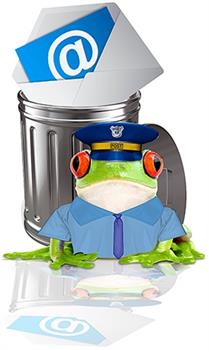August 2015: Is it time to say goodbye to that old email address that’s dated, annoying or attached to a provider you no longer love? Is all the spam driving you nuts? Do you want to consolidate all of your email so it’s easier to manage but you’re worried about not getting important emails?
Then here’s your six-step plan for making a smooth email transition and leaping forward into happier inbox days:
1. Choose a new email address you like.
Really like. That way you don’t have to go through this process again anytime soon — simple is usually best for longevity. Or you can just migrate to another email address you already have.
2. Forward email from your old account to your new one.
Each email provider has a different way of doing this but the goal is the same — have all of your incoming mail come to your new address so you have less to migrate later (if you decide to migrate).
3. Update the online accounts that have your old email address.
This is the part that can make you keep an old or awful email address for a really long time. Bank accounts, health providers, government offices, Internet providers, social media accounts, shopping sites — the list of who may have your email address can go on and on. To find them:
- Look through your stored emails
- Search your email database for keywords like “unsubscribe” or “confirm your email”
- Look through your password vault if you’re using LastPass or another password management system
- Review your bank and credit card statements to see where you send payments
- Monitor the forwarded email that’s coming to your new email
Flag the accounts and people you want to inform about your new address. You might want to update the accounts in batches to avoid feelings of extreme tediosity.
4. Email your contacts.
Send a short announcement that includes your new address and a request to update your contact information. To avoid spam filters, make sure to send the email from your old address. Put your new email address in the To field (sending the email to yourself) and BCC everyone else to keep recipients from seeing each other’s email addresses.
5. Set up your current email auto-responder.
Some email providers call this a “vacation responder.” Write a quick note that informs the sender your email address is changing. If possible, set it up for your contacts only so it doesn’t also go out to spammers and all those newsletters you haven’t read in years.
6. In three months, delete the old account.
Now that you have updated all of your accounts and everyone has had lots of time to update their contacts, delete away!
| You may also be interested in: |

